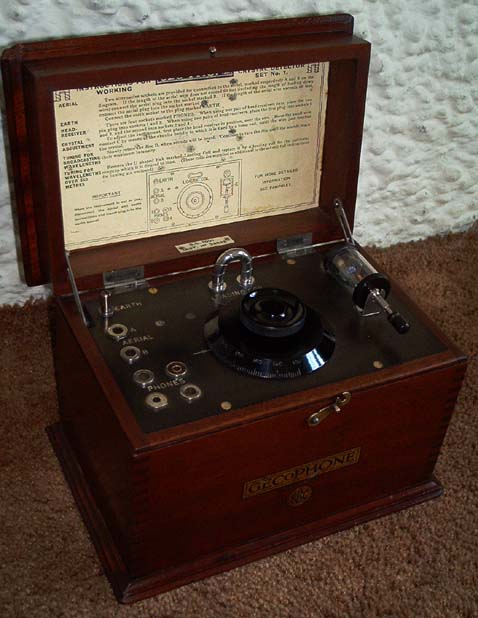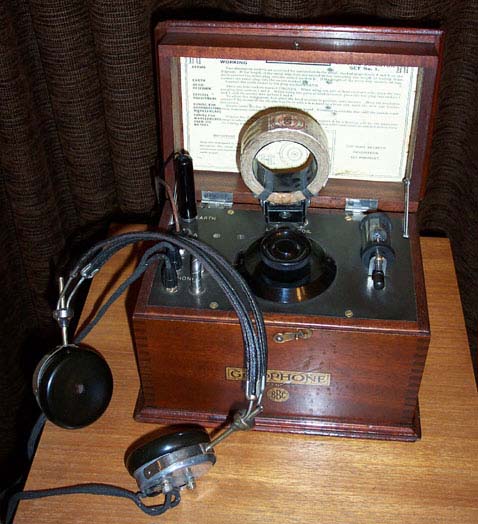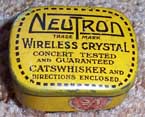
Gecophone Crystal Set No.1

This one is my pride and joy! For many years I had dreamed of owning a genuine 1920's crystal set. But the prices.....! Eventually at a recent NVCF my wife persuaded me that I should perhaps consider it as an investment. I didn't need too much convincing!
You do need to be careful though. A seemingly identical set we found looked very good from the outside, but the innards had been totally cannibalised! The beautiful variometer had been replaced with a bolt to hold on the tuning knob. In all fairness, the vendor did say it was "not quite complete"...
My first experience of crystal sets was a disaster. A school-mate and I went on a bike ride in the country and he took along his set. I don't remember exactly what it was - it was in a plastic case and had a crystal earpiece. We threw some wire over a tree and spent the next hour fiddling about - but all to no avail. All we got were a few clicks.
A few years later I was bought a second hand "Trans-Tronic" kit for a birthday (rather like the better known "Tri-onic" kit - only cheaper). This consisted of a piece of peg board with plug-in components on plastic bases. These were then wired up using rather fragile spring connectors. The simplest set you could make with it was the inevitable a crystal set. It covered medium and long waves using a push-in ferrite cored wand for tuning. I remember the connections were mysteriously marked "GO" and "PO" - I never understood why! However, with lots of thin wire strung round the garden and a good earth connection, it worked amazingly well. I was hooked!
In those days, of course, I could probably have picked up a "real" crystal set for a couple of shillings. They were out of fashion now that valve and even transistor radios were around.

Radios are not ornaments. All the sets in my collection have to earn their keep - and a crystal set is no exception! So the Gecophone is on display in the lounge, permanently connected to an aerial and earth with a pair of suitable vintage headphones plugged in (I believe "always-on" is the current expression). Visitors are invited to try their skills "tickling the crystal".
Even with a mediocre aerial, looped just under the eaves of our bungalow, three stations can just about be heard if you get the cat's whisker in that sensitive spot. With the aerial plugged into the "B" socket (i.e. directly to the top of the tuned circuit) Radio 5 Live comes in at good strength, but the selectivity is lost. One day I'll connect it to the main antenna (G5RV at 25ft) and see what it can really do!
As those in the know will have spotted from the new picture above, a certain amount of cheating has been going on! In order to escape from the incessant sports reporting of Five Live to the wonderfully varied programs of Radio 4, a long wave capability has been incorporated. Unfortunately,
the original long wave loading coil is still being sought, and so a substitute has been (reversibly) modified to suit. If anyone knows where I could obtain the correct item, I would be most grateful if they would contact me.

Finally, no crystal set page is complete without reference to the wonderful and varied range of
crystal tins.
Back to Old Radios